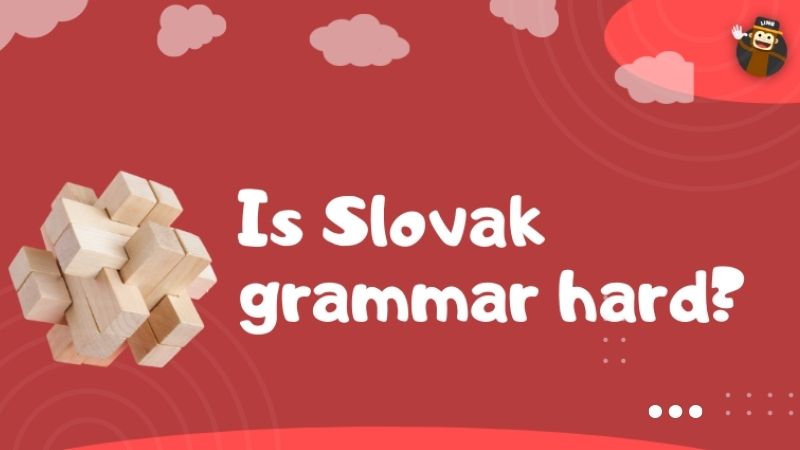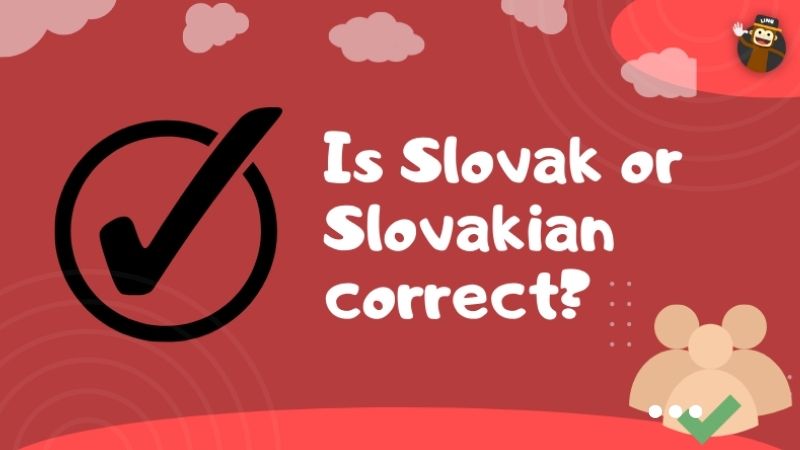Is Slovak a challenging language for you? Don’t worry! These 5 most common Slovak sentence structures will assist you in forming Slovak sentences so that you can speak and write in the language in no time.
Keep reading till the end and start your journey to become fluent in Slovak and speak with the locals like a pro! Ready for this interesting lesson? Then start learning Slovak with sentence structures.
About The Slovak Language
You might have heard many Czech Slovak groups speaking the West Slavic language. This language is written in a Latin script, and it belongs to the Indo-European language family.
Slovak is officially spoken in Slovakia and has similarities with other Slavic languages like Russian, Czech, and Croatian. In addition, you can identify many Latin and German words added to Slovak Vocabulary.
Slovak Dialects
There are three main dialects spoken across the country by different populations. They are known as Eastern, Central, and Western Slovak. These are just a few of the spoken languages in Slovakia.
Central Slovakians adopt the Central dialect from the standard Slovak language, while Western Slovak is adopted from the Moravian dialect of Czech, and Eastern Slovak mostly resembles the Polish dialect.
Is Slovak Grammar Hard?
If you speak other languages, you might find Slovak hard because many people cannot learn the Slovak language because of its complex grammar.

This is the only language that has seven grammar cases. There are declinations in Slovak nouns, pronouns, verbs, and adjectives, making learning more challenging.
Let’s learn the 5 most common Slovak sentence structures you need to know to achieve fluency.
Is The Slovak Language The Hardest In The World?
Did you know that people who speak foreign languages consider the Slovak language the most complicated language globally? But don’t get disappointed! We have got an excellent solution for you to ease things up.

Studies show that learning a new language ensures the healthy development of your brain. You get smarter, and your memory becomes sharper.
If you wish to learn the 5 most common Slovak sentence structures or the Slovak language, try the most intelligent language learning app called the Ling app.
The Ling app will help you practice Slovak sentence structures through many interactive games and engaging quizzes.
You can even learn some of the basic Slovak sentences, Personal pronouns, long vowels, and grammatical cases in no time.
Form And Structure Of Slovak Sentences
Slovak sentence structure has the basic sentence formation, including subject-verb and object.
For example, Sarah plays the piano. (Sara hrá na klavíri)
However, the position of s + v + o gets changed in different Slovak sentences.
Declarative Sentence
If you see a declarative sentence in English, the sentence structure is like ‘Allie goes to the office every day.’ (Allie chodí každý deň do kancelárie.)
But Slovak speakers change the position of words according to the need of what they have to emphasize. The emphasized word usually comes at the end of a sentence.
Interrogative Sentence
In interrogative sentences where you ask questions, you usually see the structure in such a way.
Interrogative pronoun + verb + subject + other parts of speech
For Example
When does Sarah go to school?
But in the Slovak language, the Slovak sentence structure of a question becomes verb + subject + other parts of speech.
Kedy ide Sara do školy?
Imperative Sentence
In an imperative sentence, where you request or order directly by addressing the person, the sentence structure is Go to school.
If you see the Slovak sentence structure of imperative, it will be (ísť do školy sám).
Complex Sentence
When two or more sentences combine, they form complex sentences. If you see the Slovak sentence structure of complex sentences, you will observe the same thing.
- Mom cooks food when everybody gets home.
Now check the Slovak sentence structure of complex sentences.
- mama varí jedlo, keď sa všetci vrátia domov
Is Slovak Or Slovakian Correct?
Yes, the correct Slovak language is grammatically correct, having seven different grammar cases.

However, for people who usually call Slovakian, it is not the language. They probably get confused or mix Slovenian and Slovak languages.
Slovak and Slovenian are two separate and different languages.
Other Grammatical Forms
If you know the Latin script, you might find Slovak phonemes familiar.
Slovak has a complex sound system having long vowel sounds that you can quickly observe in standard Slovak and people who speak in Central Slovak dialects.
Slovak uses diacritical characters (“dĺžeň”), prolongation marks, or “lengthener, which indicates the length.
If you observe the genders in Slovak nouns, you will notice three genders used.
- Masculine
- Feminine
- Neuter
Similar to other languages, Slovak also has three moods.
- Present tense
- Past tense
- Future tense
Slovak verbs are divided into two ver
How Many Grammar Cases Does Slovak Have?
Slovak grammar has seven cases that are listed below:
You will find a fundamental case that does not get changed and is easy to understand. This is called a nominative case. The examples are:
Genitive Case
When you have to show the ownership, a genitive case is used. The questions in which you have to inquire about the owner. Some of the examples are given below.
| In English | In Slovak |
| from who | od koho |
| from what | z čoho |
Dative Case
Let me show you examples to make it easier for you to understand. It is attached with the objective case. The examples of which are.
| In English | In Slovak |
| to whom | Komu |
| to what | k čomu |
Accusative Case
You probably find accusatives significantly less used in Slovak grammar because it’s mainly linked with action verbs like:
| In English | In Slovak |
| to do | robiť |
| to play | hrať |
| to write | písať |
Locative Case
If you see the locative case in sentences, you can quickly identify them as they are primarily used with prepositions. Check these examples to have a better understanding.
| In English | In Slovak |
| about a teacher | O učiteľke |
| on the wall | na stene |
Instrumental Case
Last but not least, the instrumental case is the 7th case, used with a Slovak preposition.
| In English | In Slovak |
| with whom | s kým |
| with what | S čím |
Vocative
You must be wondering why haven’t we discussed the fifth case called Vocative?
Let me tell you, the vocative case is not used anymore. It’s similar to nominative but is separated by a comma.
What Language Is Closest To Slovak?
Are you wondering where else you have heard a similar language? You would be surprised to know that Slovak is quite similar to Czech and Croatian.
Slovak also has a versatile word order and complex sentence formation similar to Slavic languages.
What’s Next?
Moving to Slovakia or making a new Slovakian friend will require you to learn the Slovak language. Still, You cannot learn the Slovak language unless you do not understand the 5 most common Slovak sentence structures.
Learning a new language helps you become more intelligent and competent as your brain works more actively.
However, understanding the Slovak language is difficult, but no worries. With the most brilliant application. With the Ling app, you can learn the Slovak language quickly. You can also check the weather vocabulary in Slovak or cooking verbs in Slovak if you want to try Slovakian cuisine. The Ling app will help you reinforce all the 5 most common Slovak sentence structures with many games and quizzes. You can also learn more about the Slovak alphabet, spelling, and Slovak verbs on the app!
The 5 most common Slovak sentence structures will be more accessible if you practice the language for 10 minutes a day.
So best of luck!!










